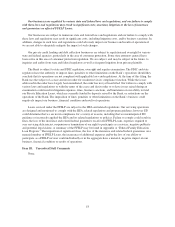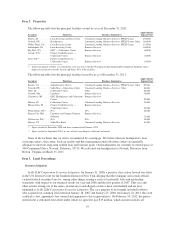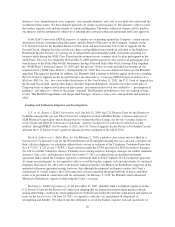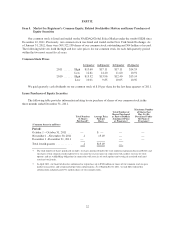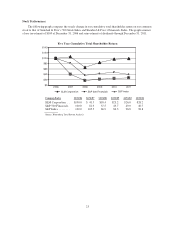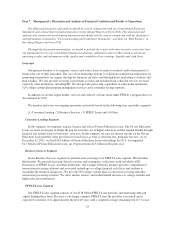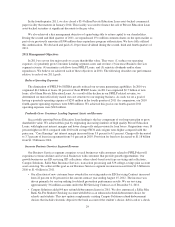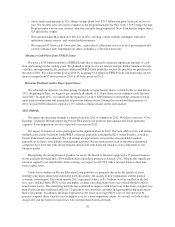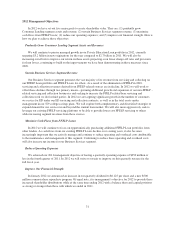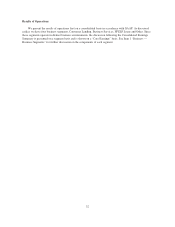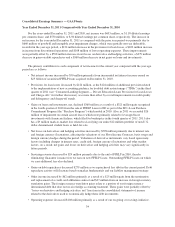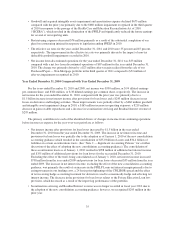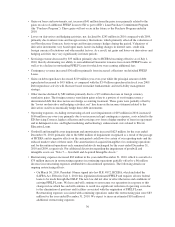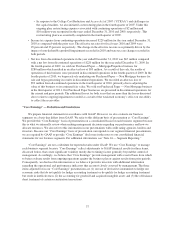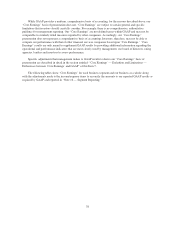Sallie Mae 2011 Annual Report Download - page 30
Download and view the complete annual report
Please find page 30 of the 2011 Sallie Mae annual report below. You can navigate through the pages in the report by either clicking on the pages listed below, or by using the keyword search tool below to find specific information within the annual report.Operating Expenses
The operating expenses reported for our Consumer Lending and Business Services segments are those that
are directly attributable to the generation of revenues by those segments. The operating expenses for the FFELP
Loans segment primarily represent an intercompany servicing charge from the Business Services segment and do
not reflect our actual underlying costs incurred to service the loans. We have included corporate overhead
expenses and certain information technology costs (together referred to as “Overhead”) in our Other segment
rather than allocate those expenses by segment. These overhead expenses include costs related to executive
management, the board of directors, accounting, finance, legal, human resources, stock-based compensation
expense and certain information technology costs related to infrastructure and operations.
Core Earnings
We report financial results on a GAAP basis and also present certain “Core Earnings” performance
measures. Our management, equity investors, credit rating agencies and debt capital providers use these “Core
Earnings” measures to monitor our business performance. “Core Earnings” is the basis in which we prepare our
segment disclosures as required by GAAP under ASC 280 “Segment Reporting” (see “Note 16—Segment
Reporting”). For a full explanation of the contents and limitations of “Core Earnings,” see “‘Core Earnings’—
Definition and Limitations” of this Item 7.
2011 Summary of Results
We continue to operate in a challenging macroeconomic environment marked by high unemployment and
uncertainty which contributes added uncertainty to Private Education Loan repayment and default patterns. On
July 1, 2010, the HCERA eliminated FFELP Loan originations, a major source of our net income. All federal
loans to students are now made through the DSLP and as discussed above, we no longer originate FFELP Loans.
In addition, on July 21, 2010, President Obama signed into law the Dodd-Frank Act that represents a
comprehensive change to banking laws, imposing significant new regulation on almost every aspect of the
U.S. financial services industry. A discussion of HCERA and the Dodd-Frank Act can be found in Item 1
“Business” and in Item 1A “Risk Factors” in our 2011 Form 10-K.
Despite this environment, we were able to achieve significant accomplishments during 2011 as discussed
below.
GAAP 2011 net income was $633 million ($1.18 diluted earnings per share), versus net income of
$530 million ($.94 diluted earnings per share) in the prior year. The changes in GAAP net income are driven by
the same “Core Earnings” items discussed below as well as changes in “mark-to-market” unrealized gains and
losses on derivative contracts and impairment of goodwill and intangible assets that are recognized in GAAP but
not in core earnings results. In 2011, we had a $623 million increase in unrealized mark-to-market losses on
derivative contracts and $660 million less goodwill and intangible asset impairment compared with 2010.
“Core Earnings” for the year were $977 million ($1.83 diluted earnings per share) compared to $1.03 billion
($1.92 diluted earnings per share) in 2010. “Core Earnings” were down due to a decrease in gains on loan sales
and debt repurchases from the prior year ($574 million or $.69 per diluted share in 2010). Excluding these gains
on loan sales and debt repurchases in 2010, “Core Earnings” were up $521 million year-over-year due to
improvements in net interest income, loan loss provision, expenses and discontinued operations.
During 2011, we raised $2 billion of unsecured debt and issued $2.4 billion of FFELP ABS and $2.1 billion
of Private Education Loan ABS. We also repurchased $894 million of debt and realized “Core Earnings” gains of
$64 million in 2011, compared with $4.9 billion and $317 million in 2010.
28


